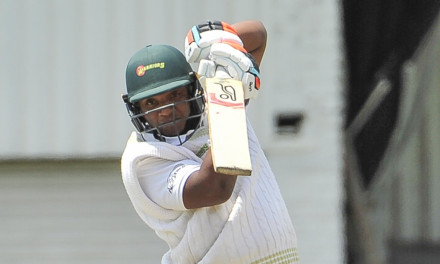“Getting a performance in the subcontinent means a lot,” said Anrich Nortje, who registered his third five-for in the second Test against Pakistan in Rawalpindi.
Nortje said that he wanted to utilize the bounce on offer on this wicket, particularly with the new ball.
“When the ball was a bit harder, I saw an opportunity to get the short ball through. At the end of the day, it paid off to have the hardball and bounce,” explained Nortje.
When the ball got older, the pitch did play the odd trick, with some balls keeping low. Nortje anticipates variable bounce will play a role as the game goes on.
Prior to the first Test match, the bowling group had a conversation about maintaining high energy levels during their spells. The team’s strategy was to use the bowlers in short bursts.

Pakistan finished their first innings with 272 on the board, largely thanks to an unbeaten 78 from all-rounder, Faheem Ashraf, who shepherded the tail smartly to score as many runs as possible towards the end.
“It’s become a problem,” Nortje conceded when asked about the inability of South Africa’s bowlers to dismiss the tail. However, Nortje maintained the Proteas bowlers did well to control the run-rate even if they didn’t have the wickets to show for it.
While the Proteas ended the day at 106/4, Nortje remains confident that a partnership will swing the momentum in South Africa’s favour. “We can exceed their total,” said Nortje.
Meanwhile, Pakistani all-rounder, Faheem Ashraf said both, batsmen and bowlers, need to spend long periods on the wicket to earn their rewards.
“Wicket-to-wicket bowling is most effective,” Ashraf said. With Proteas skipper, Quinton de Kock, launching a counterattack towards the end of the day’s play, scoring an unbeaten 24 off 11 balls, Ashraf said, “we will try to stop de Kock in the morning.”
WE ARE 100% BOOTSTRAPPED. BECOME A PATRON AND JOIN US ON THIS JOURNEY.











